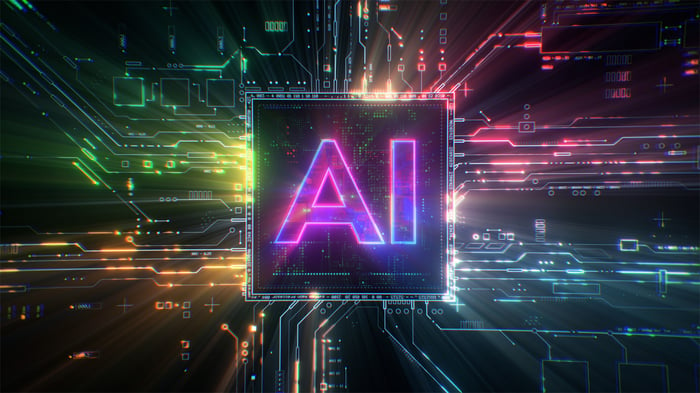|
|
|

|
|||||

|
|
Tesla is building a vertically integrated AI stack.
Building more of its own infrastructure in-house could help Tesla streamline its operations as it doubles down on the Cybercab and the Optimus robot.
Tesla's efforts on this front could theoretically reduce its reliance on chip suppliers like Nvidia.
Few figures in the business world command attention quite like Elon Musk. Known for his ability to shape narratives and capture Wall Street's attention, he has once again grabbed the spotlight -- this time with comments about Tesla's (NASDAQ: TSLA) ambitions to design its own artificial intelligence (AI) chips.
Just had a great design review today with the Tesla AI5 chip design team! This is going to be an epic chip.
And AI6 to follow has a shot at being the best by AI chip by far.
Switching from doing 2 chip architectures to 1 means all our silicon talent is focused on making 1...Where to invest $1,000 right now? Our analyst team just revealed what they believe are the 10 best stocks to buy right now. Continue »
-- Elon Musk (@elonmusk) September 6, 2025
Tesla's efforts to move into custom silicon could be significant for the company's next-generation products -- but what might they mean for semiconductor powerhouse Nvidia?
AI5 -- and its successor AI6 -- are simply Tesla's internal codenames for its next generation of custom chips. While Musk's comments may fuel a debate over which company is designing the most advanced silicon, investors should look past the surface-level narrative. His underlying message points to something larger: Tesla is pursuing deeper vertical integration of its technology stack.
The rationale is straightforward. By consolidating its high-end computing onto a single family of purpose-built chips, Tesla gains greater control over both performance and cost -- and can streamline engineering cycles and accelerate product development. From a financial perspective, this strategy also has the potential to improve unit economics by reducing supply chain risk and expanding profit margins over time.

Image source: Getty Images.
Tesla's AI ambitions can be divided into two categories: self-driving cars and humanoid robotics. While these markets target different end users, the unifying theme is autonomy.
Importantly, autonomy will not be achieved as a singular breakthrough -- it will be the product of constant iteration. Both Tesla's robotaxis and its Optimus robots rely on taking in fresh real-world data and using machine learning loops to steadily become "smarter" and more capable over time.
Given the context above, it's critical to note that Nvidia remains the leader in powering the training side of AI workloads. Tesla may have bold ambitions in custom silicon design, but the key question for investors is whether its efforts could truly disrupt Nvidia's dominance in the data center landscape.
At present, I see that as highly unlikely. Nvidia's entrenched position -- anchored not only by its hardware but also by its widely used CUDA computing platform -- gives the company broad ecosystem advantages. Coupled with its rapid pace of product development -- it rolled out its Blackwell Ultra GPUs earlier in this quarter, and will launch its next-gen Rubin GPUs in 2026 -- these factors make it difficult for any competitor to materially erode Nvidia's lead in AI infrastructure at this time.
Nvidia's dominance is not solely a function of its chips. Rather, the company's comprehensive hardware-software stack creates immense friction for enterprises considering moving some of their business to rival platforms. This creates a formidable technological moat and durable competitive advantage for Nvidia.
With this in mind, the broader takeaway is that Nvidia's flywheel is unlikely to come to a sudden halt simply because one company is choosing to become more self-reliant. While Tesla may eventually compete with Nvidia in the autonomous vehicle chip market, it is quite likely to remain a complementary player -- or even an Nvidia customer -- when it comes to AI training protocols.
Against this backdrop, Tesla's progress in developing its own infrastructure is notable, but those efforts are still in their early stages. All the while, Nvidia continues to roll out improved successor architectures to its already industry-leading GPUs.
The bottom line is that while Tesla may find ways to meet some of its chip needs in-house over time, it is still far from achieving a checkmate position against the AI chip leader.
Ever feel like you missed the boat in buying the most successful stocks? Then you’ll want to hear this.
On rare occasions, our expert team of analysts issues a “Double Down” stock recommendation for companies that they think are about to pop. If you’re worried you’ve already missed your chance to invest, now is the best time to buy before it’s too late. And the numbers speak for themselves:
Right now, we’re issuing “Double Down” alerts for three incredible companies, available when you join Stock Advisor, and there may not be another chance like this anytime soon.
*Stock Advisor returns as of September 15, 2025
Adam Spatacco has positions in Nvidia and Tesla. The Motley Fool has positions in and recommends Nvidia and Tesla. The Motley Fool has a disclosure policy.
| 59 min | |
| 1 hour | |
| 1 hour | |
| 2 hours | |
| 2 hours | |
| 2 hours | |
| 2 hours | |
| 2 hours | |
| 2 hours | |
| 2 hours | |
| 2 hours | |
| 3 hours | |
| 3 hours | |
| 3 hours | |
| 3 hours |
Join thousands of traders who make more informed decisions with our premium features. Real-time quotes, advanced visualizations, backtesting, and much more.
Learn more about FINVIZ*Elite